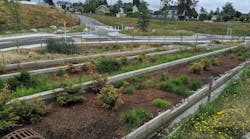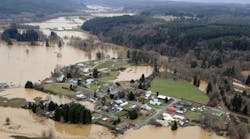
The size of the average new single-family home in the US is now more than 2,600 square feet, having grown over the decades. In the 1970s, it was just under 1,800 square feet. In 1900—when families tended to be much larger—the average home ranged from 700 to 1,200 square feet.
Not everyone believes bigger is better, though, and the desire for a simpler lifestyle with less stuff has launched the “tiny house” movement—a quest to live within a smaller footprint. While a tiny house is technically anything under 500 square feet, some are much smaller than that, often built with wheels so they can be towed to new locations—really more of an RV than a fixed abode. There are custom-made versions (some approaching the cost of a much larger home) and even a TV show dedicated to them.
Of course, if you’re concerned about the effect of your living space on the environment, it’s not only the size of the house that matters but also where you put it. Sure, your roof is an impervious surface—but so is the road leading to your house, wherever that is, and all the infrastructure that supports it—water lines, sewage pipes, electrical wires—has an impact as well. As this article by John Jacob illustrates, there’s a lot to be said for denser development. Building a tiny house and then towing it to the middle of a remote field might somewhat defeat the purpose.
An architect in Hong Kong, where space is at a premium, has come up with a new twist on the tiny house—and a new use for old water pipes at the same time. James Law’s OPods are self-contained apartments built inside a length of concrete pipe, each with a bed, bathroom, shower, and rudimentary kitchen. The pipe sits on braces—to keep it from rolling away, presumably—and, Law says, can fit neatly into the narrow spaces between existing buildings or on roofs. They can even be stacked. (Scroll to the bottom of this article for an artist’s rendering of what that might look like; I’m still trying to figure out how the residents would gain access to their stacked apartments.)
About the Author
Janice Kaspersen
Janice Kaspersen is the former editor of Erosion Control and Stormwater magazines.

